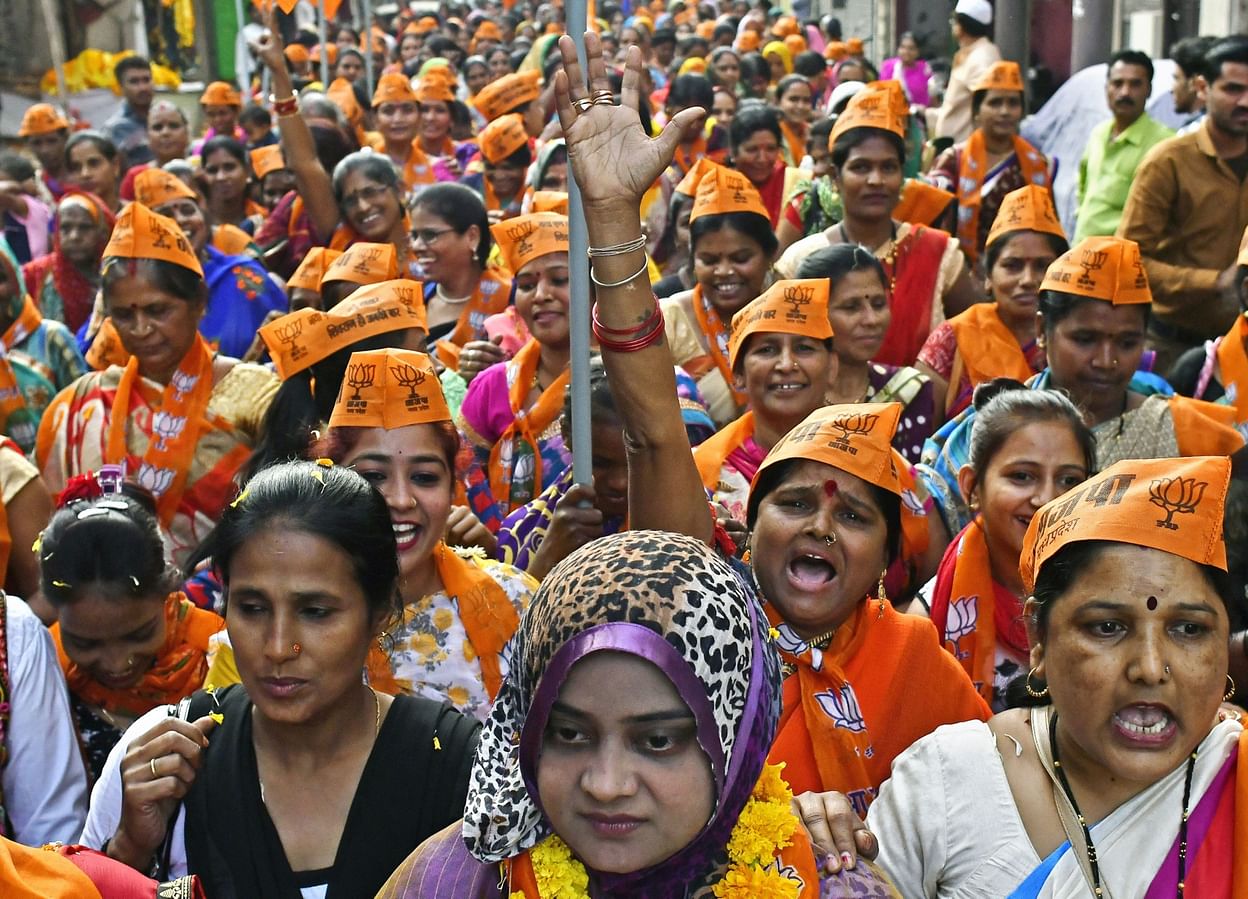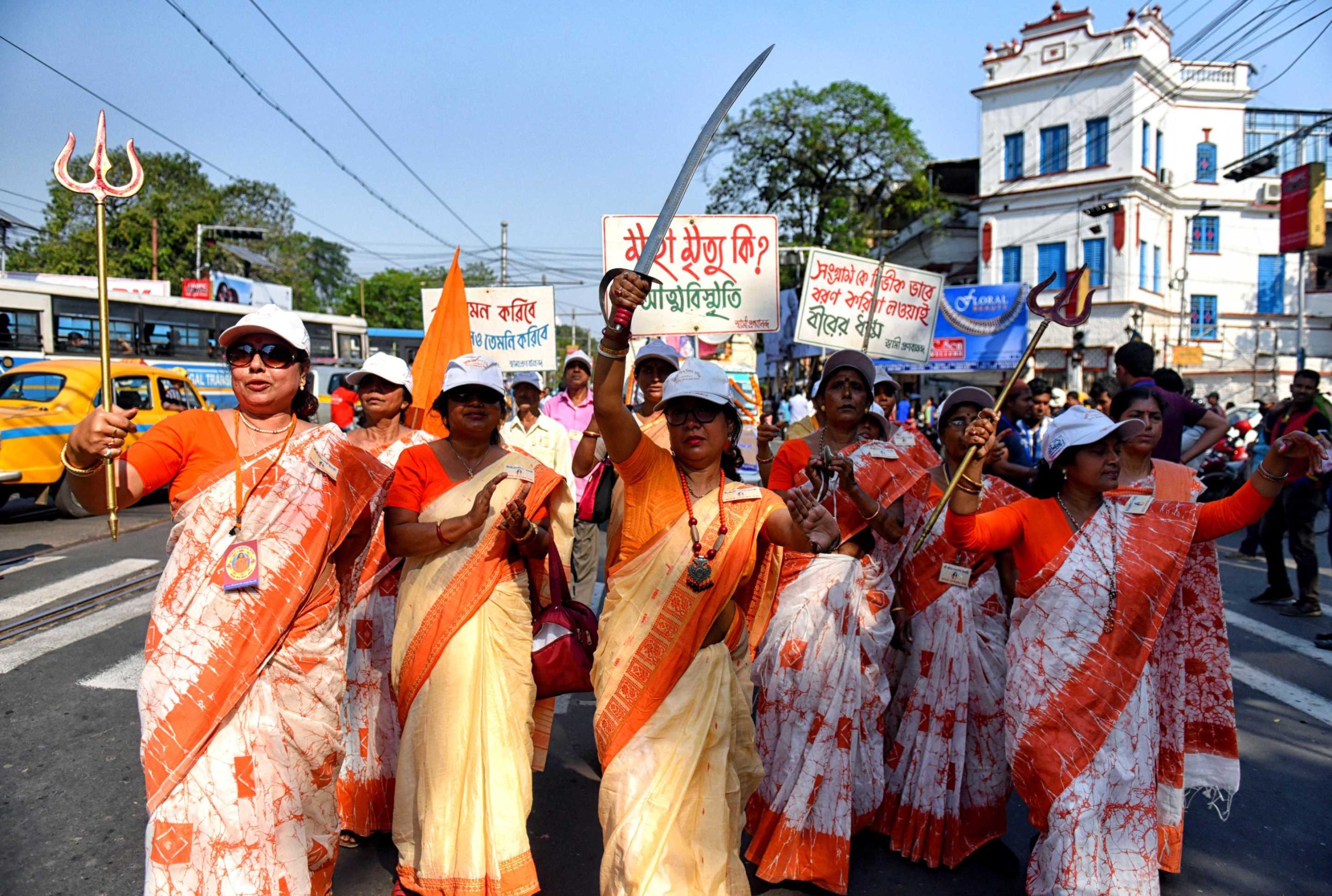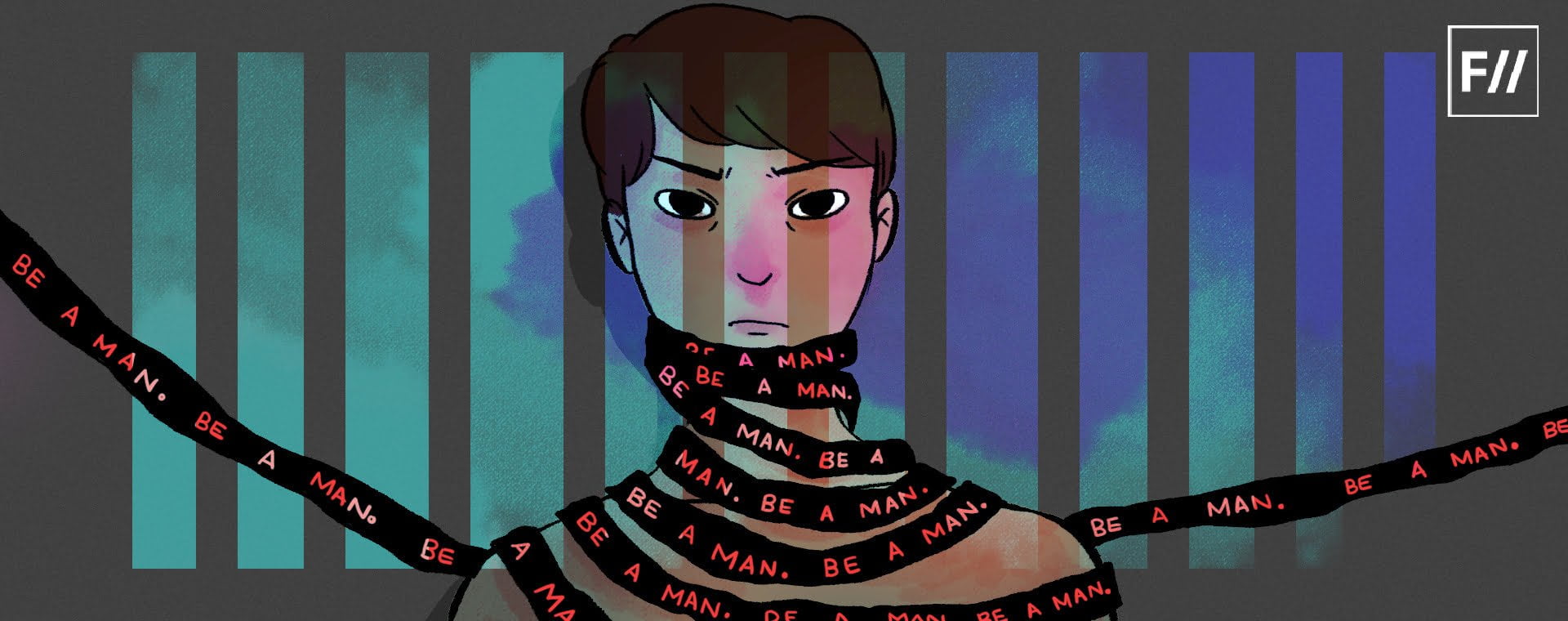In recent times, one may observe that the state has become increasingly gendered in approach when concerning anything that relates to women. It can be clearly seen with Love Jihad and accompanying laws, the politics of the Hindu state now rests on ultra-protectionist tendencies for the Hindu community.
Two major states, Uttar Pradesh and Madhya Pradesh have approved Love Jihad laws to stop conversion of women through a supposed ‘deceit of marriage’, while a third state, Karnataka is waiting for the next session of the Parliament to introduce it. The gendered nature of Love Jihad laws is well-known. It is to protect the women of the Hindu community against an ‘other’ that maligns the community as a whole and against the sin of conversion.
Overall, there is a general sense of misogyny that is engendered in the various machinery of the state. The National Commission for Women argues that for their own safety, women shouldn’t be heading out late into the night; nor are they expected in the farmers protest as has been argued by the Supreme Court.
How has the state become a complex product of masculine gaze that is out and about with its misogyny and generally low outlook of women?
This calls for a scrutiny of the state itself asking the question: How has the state become a complex product of masculine gaze that is out and about with its misogyny and generally low outlook of women? The simplistic answer to this can put the emerging Hindu fundamentalist nation under the BJP government as the culprit that has become increasingly hostile to ‘outsiders’, and as it cannot eradicate them completely, it must protect its ‘own women’.
But when we look back in history, one may find that such tendencies are not something new. Such tendencies, to protect women (and Hindu community as a whole), when put into the broader context of the nation reveals the gendered nature of the state as a whole, regardless of what government.
Bearing the nationalist race, within the household
Reform in pre-independence India, as seen in the efforts of reformist groups such as Arya Samaj or Brahmo Samaj, were particularly focused on the question of women. Feminist historian Uma Chakravarti in her essay, recounts the tension of socioreligious reform within the Hindu community:
The socio-religious reform movements of the nineteenth century advocated a reform of Hindu society whose twin evils were seen as the existence of caste and the low status of women. All the major reformers of the time attacked the practice of Sati, child marriage and enforced widowhood
The problem with this kind of reform was that the major reformers tended to look back at the Shastras and Brahmanical texts as sources for making arguments for reform against their opponents. Chakravarti points out, “The deciding factor in the debate between the liberals or progressives, and the conservatives was the relative antiquity of the source from which they were quoting. […] Raja Ram Mohun Roy, Ishwarchandra Vidyasagar and R.G. Bhandarkar, all quoted copiously from the Sanskrit sources in order to attack the conservatives.”
The Hindu reformers stuck to the ideals of the Hindu fold and wanted to exact change in the status of women on their own terms. Joining in this bandwagon of Brahmanical discourse were nationalist historians. For them, there was a general preoccupation to find well-meaning, ‘pro-women’ agendas in ancient Indian history and texts. Thus many scholars and historians of nationalistic fervour argued for a ‘high-social status of women in ancient India’.
While such historiography has been refuted as a nationalist longing and protection of a better past that didn’t exist, the larger theme that runs through such practice of history writing has been the absolute limiting of the category of ‘women’ in the context of ‘family’.
Chakravarti notes that “It is the status of women within the family, and primarily in the relationship of wives to husbands with which the traditional writers were concerned.” These concerns were only a fragment of the larger concern of the masculine Hindu race as women were seen as the bearers of it. This can be clearly seen in the case of a historian, A.S. Altekar, who has expressed fear that it would be unfit for “the future well-being of the [Hindu] race” if women are educated on top of household work as it may put too much strain on them. Such visions of reform are limited to the needs of a patriarchal household.
The future of a race, written about by men, fought over by men and whose source is Brahmanical texts are characteristic of a masculine race.
The future of a race, written about by men, fought over by men and whose source is Brahmanical texts are characteristic of a masculine race. This is directly tied to a sense of Hindu nationalism where women are to be structured and placed in well-defined boxes that can successfully represent a modern Hindu race. Though a possible differential in the notion of nationalism extremely stuck in masculinity can also be found.
Not only traditional writing but the nationalist novel, fiction writing too talked about women in many ways. One of the more famous writers, famed for the patriotic song ‘Vande Mataram’ , Bankimchandra Chatopadhyay was also known for his imaginative fiction that represented the crisis of the nation against colonial occupation.
Bankim’s recourse for women was greatly more progressive as compared to the scholars mentioned above. As argued by feminist critic Jasodhara Bagchi, women and womanhood, in many of his scenarios of fiction were given an anti-imperialist vision. The women of Bankim’s nationalist fiction was to represent the spirit of womanhood that somewhat “delinks wifehood from the ‘enclosed space’ of domesticity“. These ‘delinked women’ are to be by their husbands sides as they struggle for the nation against colonial domination. This womanhood immediately showcases greater agency for women, at least when it is concerned with questions of the nation.
Also read: We Need To Stop Viewing Women As The Flag-Bearers Of Nationalism
Women are now given the responsibility to protect and serve the nation as a whole against the colonial crisis (and not protected under a male gaze, against ‘outsiders’); though it too is limited under the garb of ‘wifehood’ and also limited within the Hindu fold of values.
Bankim’s fiction can be seen as a more progressive nationalism (with its limitations) that looks at women in a different light. If such a nationalism can be envisioned that can evolve its discourse progressively, what could be the reason that an extremely bigoted nationalism finds its way in our current political discourse?
Standard of purity
If the said masculine race has evolved before and after independence of India, one may say it did so on its own route with the aid of a colonised state. The more pertaining question to ask here may be of sexuality and class division of society.
Another trait of women that was considered to contribute to women having a low status in Indian society was their sexuality. Now, this is simply and purely a problem of contrast between the ideal of Victorian womanhood that carried sexuality nowhere but in private and the very much out and about representation of sexuality, in literature, arts, dance and theatrics of women in India. The key representative of the latter are the Devdasis who were becoming an increased ‘nuisance’ for the middle-classes by the end of the 19th century. They were increasingly perceived as ‘uncouth’ and ‘debauched’, as compared to the modest upper-caste, middle-class Hindu householder women. The implications of such perceptions are far reaching.
As brilliantly recounted by scholar Janaki Nair, what started out as reformation of temple management systems and budgets in the princely state of Mysore, became a quest to curb the existing art and tradition of the Devadasis, with easy state intervention. Temple management, subjected to state-intervention, was also influenced by anti-nautch campaigns of the neighbouring state of Madras. These campaigns stood against the practice of dancing in temples, as they found the dancing girls in a position of ‘immorality’. Notions such as these were majorly aided by British “missionary critiques of bad Hindu practices.”
Acting on the said notions which received increasing acceptance in the public, what followed first was the cut in the ‘source of livelihood’ for the Devdasis by removing the payments and patronage offered to them through temple grants.
Secondly, the temple authorities sought to redefine the conduct of the dancing girls by asking if celibacy is to be expected of them. They did this by (reminiscent of the ways we have seen before) looking back at the shastras and brahmanical texts. Once it was readily accepted that they were indeed supposed to be celibates and thus have violated scriptures by their overt sexuality in their dance form and other services, the state came to be seen as “not merely the protector of true Dharma, but restorers of a previous standard of purity.” Women have now been reinstated within a patriarchal household that contained ‘respectable sexuality’ and was on par with the higher ideal of the Victorian woman against the Devdasis ‘disrespectable’ one.
Why must this state be called masculine? Nair promptly argues that the state did question the men who enjoyed the services of the devadasis. But ultimately the state vilified women and “[they] alone (‘notoriously of loose morals’) bore the responsibility for the degeneration of high ideals.”
Also read: ‘Nationalism Revisited’: In The Personal Interest Of The Right-Wing Regime
Hence the present crisis of surveillance over women and general gendered notion of law-making, broadly noticed in several governments of Uttar Pradesh, Madhya Pradesh and Karnataka and the Indian state at large has in fact been a tradition of the state which longs for a chaste Hindu society of which it can be proud of.
Throttling women’s agency, which has been one way of defining the Hindu community as pure, has in the present time become a dominant mode of action for women in general. Protectionism of the state is reflective of its history, only moulded further by the notion of purity of a Hindu race that seeks to dominate over women and India in general. As the older state of Mysore enacted the ideals of a middle class people about women, it should be seen that the present Hindu society with its increasing anxieties also drives the state towards its bigotry and misogyny.
Kushal is an independent writer based in Banaras, Uttar Pradesh. He is interested in the history of traditional and modern cultures of India. You can reach him at his Instagram or Twitter. He can be found on Instagram, Twitter and Facebook.
Featured Image Source: Anindito Mukherjee/Bloomberg




